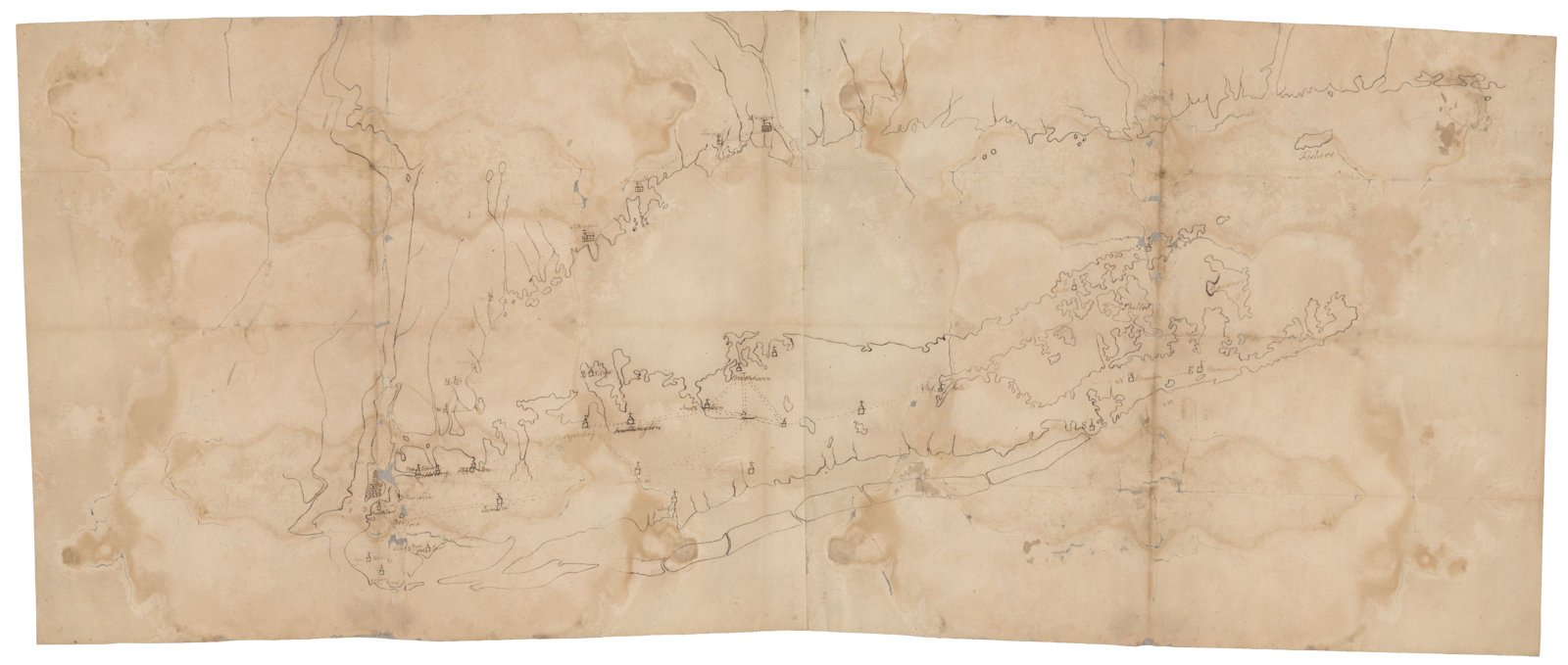Andalusia, the southernmost strip of Spain. For centuries, the vanguard of the Islamic world in Europe and the intellectual garden of the Mediterranean. Issuing from a melting pot of Muslims, Jews, and Christians, Andalusian mystics like Ibn Arabi, poets like Ibn Hazm, and philosophers like Ibn Rashid and Maimonides, inaugurated currents of thought that went on to change the world far beyond their place of origin. Among their ranks, there was also a lesser known, but not less interesting, writer. His name was Ibn Tufail, and he was well respected in his time as a proficient astronomer, theologian, and physician. Today, he is known mainly as the visionary author of one of the earliest philosophical science fictions. His novel, translated into Latin as The Self-Taught Philosopher, described the life of a child growing up alone on a desert island. Raised by a gazelle, the boy spent his childhood exploring the laws of nature, of divinity, and of his own thought. Through a combination of empirical observation and abstract speculation, he eventually grew to become the greatest philosopher of his imaginary age.
Thus, Ibn Tufail claimed, all true philosophers are born: by looking around and inside themselves, and then translating their observations into practical abstractions that can guide their lives.
Despite its originality, and unbeknownst to its author, the method proposed by Tufail could boast illustrious ancestors. Its genealogy, however, had to wait until the twentieth century to be fully revealed. In their 1969 book Hamlet’s Mill, scholars Giorgio de Santillana and Hertha von Dechend identified the same approach at the heart of another form of wisdom, chronologically anterior but in no way lesser than philosophy: mythology. Having carefully examined the first known myths, as found in the earliest extant written records from the fourth millennium BCE, Santillana and Dechend discovered that what appeared initially as a collection of fantasy tales, contained in fact very precise references to the astronomical movements that were visible in the sky at the time of their composition. Gods and heroes could be read as the narrative clothing of the celestial bodies, while their deeds and adventures offered a mythological translation of the regular movement of the night-sky. It was thus, according to Santillana and Dechen, that the scientific minds of different archaic civilizations came up with similar mythological narratives to describe the same celestial events. Mythological language, then, should be understood as an authentic form of knowledge, deriving from empirical observation and calculation.
The sequence of this process, here as in Tufail’s story, is important. First comes empirical observation, together with its mathematical recording. Second comes the mythical or philosophical translation of these observations. First came astronomy, then astrology. Or in other words, at the most primitive level of thought we find the so-called “exact” sciences, while at a further level of intellectual refinement, we have what is today most commonly discarded as the fantastic inventions of myth, or the impractical ruminations of philosophy.
To those archaic minds, to whom we owe the foundation of our contemporary edifice of knowledge, the value judgement between scientific “objectivity” and mythological narrative was the opposite of ours today. Science appeared as the mere representation of visible reality, while mythology was deemed as its abstraction and practical perfection.
This inversion might sound surprising. But there is an advantage of expressing narratively what could otherwise be communicated through the clear language of facts. To understand this, however, let us expand our exploration of mythology to include not only astronomical observations, but the empirical observation—and when possible, calculation—of all the things and events that populate a lifetime.
For each of us, life begins in darkness. We have no recollection of the moment we were born. We remember nothing at all of what happened to us before our birth. We come into the world completely unaware, unprepared, and baffled. What are we doing here? What is “here”? And who are we? Through the years of our education, we are taught, not how to resolve these existential questions, but a series of techniques with which we can cope with their insolubility. These techniques, going under the general name of “knowledge” (scientific, technical, psychological, political, etc.), consist in a series of powerful narratives through which we might be able to suspend our disbelief towards our absurd existential condition: being “alive”, within a “body” and a “personality,” inside a “world,” at a “time” and a “space,” all of whose actual material referents remain obscure.
By focusing our attention on these collective narratives, we can finally release ourselves from the metaphysical and existential doubts that torment each of us in private. We become able to identify ourselves with our own identity, and to reduce the world around us to the linguistic labels that have been assigned to each of its parts.
But at times, as in our contemporary age, these narratives prove so effective, that our suspension of disbelief begins to slide into actual belief in their absolute validity. They cease being perceived as narratives, becoming instead “facts.” This ideological turn, which appears to endow us with a firm grasp on the true “nature” of the world, affords a great deal of tranquility. We cease questioning the unsettling mystery in which we are steeped, and we cease tormenting ourselves about the limits of our understanding. But this tranquility comes at a cost. It requires that we accept being imprisoned within the narratives with which we have wrapped reality. Tranquility in exchange for freedom: the eternal dilemma.
Mythology approaches this situation from a different angle. It has a gentle approach, which doesn’t question the legitimacy of the other discourses with which we attempt to bridle the wild horse of reality. Indeed, as Santillana and Dechend claim, it maintains a close connection with scientific knowledge. But, at the same time, it entertains a close relationship with that unsettling abyss which other collective narratives attempt to relegate at an unbridgeable distance.
Mythology is aware of being a form of narrative, rather than a set of factual truths, and it is not ashamed of presenting itself as such—with all the flaws and contradictions that befall fictions. Thus, in Ancient Egypt, it was possible to swap names and attributes among the different divinities, including the Creator, with the unproblematic ease of a modern writer dealing with the characters of their literary novel: Amun became Atum, who became Ra, who became Ptah, while always remaining fundamentally the same god. Names are only names, after all, while the true reality of existence (the secret name of each thing) far exceeds the grasp of language. What counts is not the precision of a definition, but its effect.
Mythology is not a sealed system of knowledge. It is replete with contradictions, and is constantly traversed by a movement between high and low, the cosmic and the mundane, tragedy and comic relief. It mirrors the experience of life itself, with its absurd combinations of eternity and time, knowledge and ignorance, impotence and freedom. It does not dismiss the plight of living beings and their request for a system of sense that might rescue them from the abyss of Chaos. Rather, it coats the raw kernel of reality with names, characters, stories, all apparently endowed with a literal meaning. But it refrains from catering to this need by neutralizing the mystery of reality, and thus imprisoning the world into a rigid catalogue of definitions that present themselves as absolutely true, factual, and actual. Mythology remains equidistant between the conceptual bridles with which we attempt to tame the Chaos of reality, and the unsettling wildness that always teems beneath any inhabitable Cosmos (a universe that is, etymologically, the space of “order” and “beauty”).
It is in this way that the soft, self-conscious narrative of mythology can be seen as an abstraction and practical perfection of hard and “factual” forms of knowledge. Precisely in being fantastical—at a mid-point between natural realism and supernatural silence—mythology offers a unique method to cope with our deepest existential bafflement. Myths transform our existential doubts into skepsis: a double enquiry into the senseless darkness which engulfs us and the imaginary light which we need to shed around ourselves. It is a form of existential wisdom combined with abstract knowledge. Mythology, in this sense, is the nurturing parent of philosophy, and the legitimate offspring of science.
The Renaissance Garden is a concrete metaphor that can deepen our consideration of the relationship between mythology, philosophy, and science. Despite the variety of its actual instances, the essential structure of Renaissance Garden is typically composed of three sections: the hortus, a productive area with fruit trees and vegetables; another area dedicated to geometric shapes (both architectural and natural, as with topiaries); and the bosco, an area where trees and plants grow wild, and where most statues and statuesque fountains can be found. Like many traditional gardens of antiquity, starting with the Persian paridaiza, and like most ancient urban spaces to which the Renaissance looked back for inspiration, from the temple-structure of the standard Roman city to the circular perfection of the new-town of Baghdad, the Renaissance Garden represents a microscopic double of the structure of the universe.
If taken on their own, the productive hortus, reminiscent of contemporary science, and the abstract perfection of the geometric section, like a neatly arranged philosophical system, fail to provide the essence of a Renaissance Garden. Indeed, the universe is not only made of productive and abstract dimensions. It also contains unfathomable silences and intermediate spaces, the ta metaxy discussed by Plato that connect the different dimensions of existence. Yet the language through which these intermediate spaces reveal the dimensions of reality to one another remains always partly obscure to each other, and foreign to all: they speak a mythological language.
Like mythology, the bosco is this intermediate station between opposites: Cosmos and Chaos, art and nature, language and ineffability, presence and destruction, time and eternity. The presence of statues in the bosco should be interpreted not merely as an aesthetic pleasantry, but as a tool of cognitive enhancement. For the very nakedness of nature (that is, the nakedness of reality before and beyond language) evoked and embodied by the bosco’s wild growth, is incomprehensible and paradoxically veiled to human understanding. It is only the symbolic presence of the work of art, functioning like a distorting mirror, that might be able to point the viewer towards that ineffable dimension of reality.
More than just offering a visual representation of the conceptual structure of mythology, the Renaissance bosco sheds a light on the relevance of mythological form for the contemporary problem of understanding a new relationship between the so-called “natural” environment and the realm of anthropic activities. Unlike the hortus, where nature is enslaved to production, or the geometrical area of the garden, where it is reduced to conceptual cataloguing, the bosco suggest that it is possible to envisage a cognitive collaboration between anthropic and non-anthropic forces. Through mythologization, it is possible to imagine the cohabitation of different forms of existence as a kind of suspended equilibrium, where just as in the bosco, the statue reveals the meaning of the ivy at the same moment as the ivy eats into its stone. It is a space where death and life, eternity and time, reside intertwined, and no one dares to pronounce their preference for one or the other.
Tomorrow’s Myths is a collaboration between e-flux Architecture and “2086: Together How?,” the Korean Pavilion at the 18th International Architecture Exhibition, La Biennale di Venezia curated by Soik Jung and Kyong Park.








